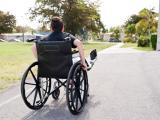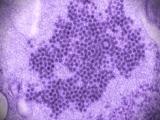With the recent outbreaks of enterovirus D68 (EV-D68) respiratory infections and mysterious polio-like illnesses in US children fading, it seems increasingly likely that the two are related, says an expert with the Centers for Disease Control and Prevention (CDC).
The CDC has reported 1,121 EV-D68 cases in 47 states since August, a number that has not increased since Nov 20, with nearly all cases in children. Meanwhile, the total for the unexplained polio-like cases, involving sudden onset of weakness in one or more limbs, reached 90 on Nov 28, which was 2 more than a week earlier. Two reported cases were still being verified.
James J. Sejvar, MD, a neuroepidemiologist with the CDC, said the latest known onset of a case of the polio-like illness occurred about 3 weeks ago. "We're continuing our surveillance and trying to identify new cases, but the good news is that it does appear that new cases have kind of ceased at this point," he told CIDRAP News.
Change in terminology
The CDC now refers to the condition as acute flaccid myelitis (AFM) in children. Earlier the agency generally referred to it as unexplained neurologic illness with limb weakness in children.
"It's an illness with acute onset that basically results in flaccid weakness of the limbs, sometimes with cranial nerve involvement, and it is a myelitis, an inflammation of the spinal cord," Sejvar explained.
He said some earlier CDC statements referred to the condition as "anterior myelitis," which is often used to describe polio. "But in many of the cases we've seen, the inflammation or infection is not limited to the anterior portion of the spinal cord; it's in fact the whole central portion of the spinal cord, so we dropped the 'anterior' part."
Telling observations
Sejvar said the CDC is not ready to state flatly that the AFM cases were caused by EV-D68, but several observations are "pretty convincing."
A little less than half of the 90 children who met the AFM case definition had evidence of EV-D68 infection at nonsterile sites, such as in nasal or stool samples, he said. "There are reasons that a child may actually have been infected with EV-68 but not tested positive," he added. "That has to do with the timing of the collection of the specimen in relation to onset of illness and the way the specimen is handled. It's entirely possible that even more children with this illness have had EV-68 infection than we're currently ascertaining."
Sejvar noted that the first cluster of AFM cases was seen in Colorado in August and September (officials said 4 of 10 case-patients there tested positive for EV-D68), and more cases were later found in other states. "It's notable that this clustering or outbreak of acute flaccid myelitis occurred against the backdrop of this large national outbreak of EV-68 respiratory infection among children," he said.
In addition, the number of new EV-D68 cases started dropping sharply in early October, and the incidence of new AFM cases started declining about the same time, Sejvar observed.
"When you put all these pieces together, it kind of makes a compelling argument that there's some relationship between EV-68 and the occurrence of the acute flaccid myelitis cases," he said.
Still looking for proof
But experts aren't ready to declare that the AFM cases were caused by EV-D68, because the link is mainly a temporal association at this point, Sejvar added. "We haven't isolated the virus from the nervous system of these children that are suffering from acute flaccid myelitis, which would be far more convincing biologically that the virus is getting into the nervous system and causing this neurologic damage."
To further investigate the link, the agency is continuing to test patients' cerebrospinal fluid samples to see if the virus is in the spinal cord or the nerve system, he said. Also there are plans to launch a nationwide case-control study to find out if children who have AFM are more likely to have antibodies against EV-D68 than children who don't have the condition.
Disease manifestations persist
Sejvar also said he and his colleagues will be assessing how the patients fare over the long haul. He said the children in Colorado have been followed most closely, and some have had varying degrees of improvement in limb strength, but in most of them the weakness has persisted.
The patients will be followed for 1 or 2 years, he said, adding, "If this behaves like other illnesses of this type, unfortunately the likelihood is that most of these children are going to be left with permanent neurologic and functional disability."
The CDC has said that EV-D68 infection was found in 12 patients who died, but it has not commented on the virus's role in the deaths, saying that determination is made by state and local officials. In October, New Jersey officials said EV-D68 contributed to the death of a 4-year-old boy who died in his sleep.
The virus was uncommon until recently. It typically causes only cold-like symptoms, but some children experience a severe respiratory illness.
See also:
CDC update on investigation of AFM cases
Related Oct 10 CIDRAP News story
Related Oct 3 CIDRAP News story






















